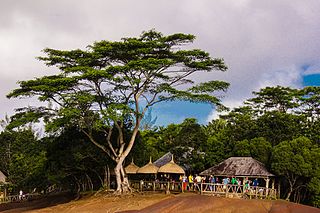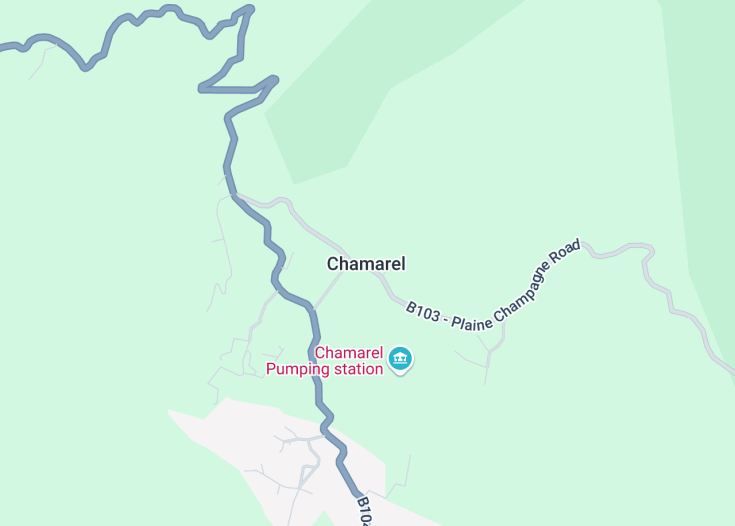Chamarel, located in the southwestern part of Mauritius, is celebrated for its picturesque landscapes and vibrant earth tones. This village boasts the renowned Chamarel Coloured Earths, comprising sand dunes with distinctly different yet natural earthy colors. Along with these famed dunes, the area is also home to the Chamarel Waterfalls—which at a significant height, provide a breathtaking view. This destination offers visitors a unique combination of geological curiosity and natural beauty, making it a must-visit for anyone traveling to Mauritius.
Ensure to carry a quality camera when visiting Chamarel to capture the stunning contrasts of its colored sands and lush surroundings.
Visit Chamarel early in the morning to enjoy the serene beauty of the landscapes with fewer crowds and better light for photography.
Top things to do & see in Chamarel
Select the following sights and activities to discover best tickets and tours available in Chamarel.
Chamarel: A Palette of Nature’s Best Colors
| Country | Mauritius |
| Time in Chamarel | GMT+4 |
| Language spoken | French and Mauritian Creole |
| Population | 700 (source: Latest Census) |
| Currency | Mauritian Rupee (MUR ₨) |
| Airports |
|
Nestled in the southwestern part of Mauritius, Chamarel is a quaint village that is celebrated for its colorful geological formations and lush landscapes. Known predominantly for the ‘Seven Coloured Earths,’ a striking natural phenomenon, Chamarel draws nature lovers and photographers from across the globe, eager to witness its vibrant, naturally striped sand dunes, which boast a spectrum of distinct colors. This small village not only showcases geographical wonders but also houses the Chamarel Waterfalls, which is among the tallest single-drop waterfalls in Mauritius, providing a spectacular backdrop for adventurers and tranquility seekers alike.
The community of Chamarel maintains a harmonious balance with nature, focusing heavily on sustainable tourism to preserve their unique surroundings. The local cuisine, infused with Creole influences, offers a palette as rich in flavors as the village’s surroundings are in colors. Apart from its natural beauty, Chamarel is steeped in history; once a plantation town during the colonial era, it has transitioned into a sanctuary for biodiversity and cultural heritage, reflecting a perfect blend of its past and present. This place not only offers ethereal landscapes but also serves as a canvas showcasing the intertwining of human history with natural history, making it a compelling destination for those who seek a deeper understanding of nature and culture.
Where is Chamarel?
Located in the Rivière Noire District of southwestern Mauritius, Chamarel sits amidst lush greenery and geological wonders.
Distances:
| Route | Distance by car | Time by car |
|---|---|---|
| Port Louis to Chamarel | 50 km | 1 hour 20 mins |
| Curepipe to Chamarel | 35 km | 55 mins |
What is Chamarel famous for?
Chamarel is most famous for its unique ‘Seven Coloured Earths’, a surreal and vibrant geological formation that offers a breathtaking view unlike any other in the world. This natural phenomenon showcases seven distinct colors of sand dunes, making it a must-visit spectacle in Mauritius.
History
The region known as Chamarel, nestled in the southwestern part of Mauritius, has a rich tapestry of history dating back several centuries. Its story begins even before it got its current name, tracing back to the initial explorations and settlements on the island.
1638-1810: Early Settlements and Colonial Rule
When the Dutch first took possession of Mauritius in 1638, the island was primarily inhabited by wildlife and the vast, undisturbed forests. It wasn’t until the French took control in 1715, naming the island Isle de France, that significant settlement began in areas like Chamarel. The region started to flourish agriculturally during the French colonial period, particularly known for its sugarcane fields under the administration of the governor Mahe de Labourdonnais.
1810-1968: British Colonization and Agricultural Development
Following the Napoleonic Wars, the British took control of the island in 1810 and continued to develop agricultural industries, with a major emphasis on sugar. Chamarel began to gain individual character as it welcomed settlers, including the influential Chamarel family, after whom the area was eventually named. This period marked significant socioeconomic changes, driven by both the abolition of slavery in 1835 and the advent of Indian indentured laborers, shaping the cultural and social landscape of the region.
1968-present: Independence and Tourism
Since Mauritius gained independence in 1968, Chamarel has evolved significantly. The late 20th and early 21st centuries have seen a pivot from primarily agricultural to a burgeoning tourism sector. Attractions like the Seven Coloured Earths, the Chamarel Waterfall, and the lush tropical forests have turned the area into a must-visit destination, renowned for its natural beauty and vibrant local culture.
Visit Chamarel
What to see and do in Chamarel, Mauritius
Chamarel is a captivating destination that offers a blend of natural wonders and cultural experiences. Visitors can explore the iconic Seven Coloured Earths, a rare natural phenomenon where sand dunes comprise different distinct colors. Nearby, the Chamarel Waterfalls offer a spectacular view, cascading from a height of over 80 meters. For those interested in the cultural aspects, the Rhumerie de Chamarel distillery provides insights into rum production along with tastings. Adventure seekers can enjoy hiking trails through the Black River Gorges National Park, spotting endemic flora and fauna.
- Seven Coloured Earths
- Chamarel Waterfalls
- Rhumerie de Chamarel distillery
- Hiking in Black River Gorges National Park
Festive Chamarel
Chamarel is vibrant with cultural events throughout the year, particularly colorful during the Creole Festival usually held in November. This festival celebrates Mauritian Creole culture with music, dance, and local cuisine, reflecting the rich heritage and traditions of the island.
Best time to visit Chamarel
The ideal time to visit Chamarel is between May and December when the weather is cooler and drier. This period offers the most pleasant climate for exploring the outdoors and engaging in the various activities the area has to offer.
is Chamarel worth visiting?
Chamarel offers a unique combination of geological curiosities, lush landscapes, cultural depth, and culinary experiences making it undoubtedly worth a visit. The appeal lies in its picturesque scenery and the chance to engage closely with nature and local traditions. However, visitors should be prepared for potentially crowded sites during peak tourist seasons and slightly higher costs related to tourist attractions. Nevertheless, for those seeking a blend of adventure, culture, and relaxation in a stunning natural setting, Chamarel meets all the criteria.










